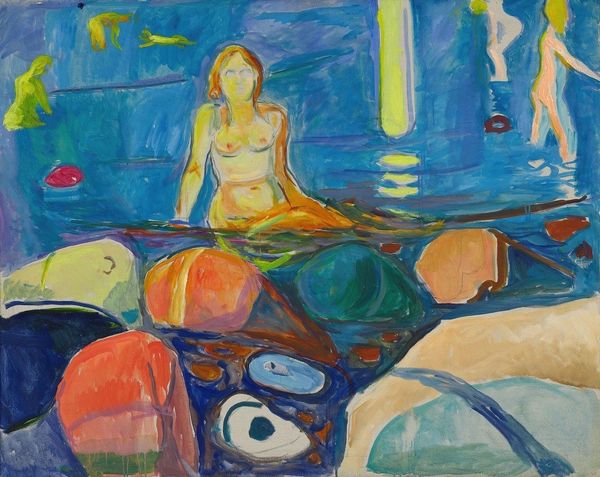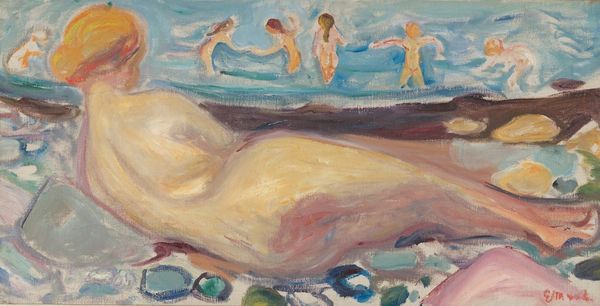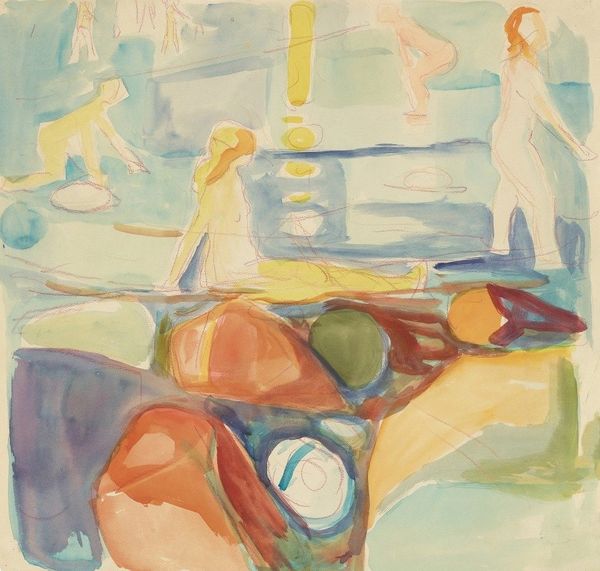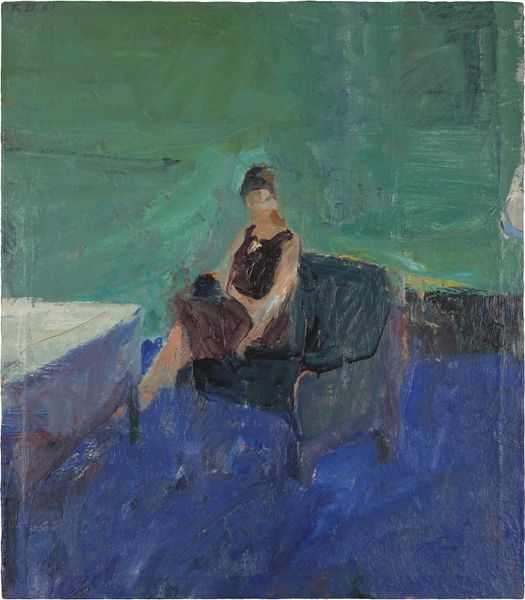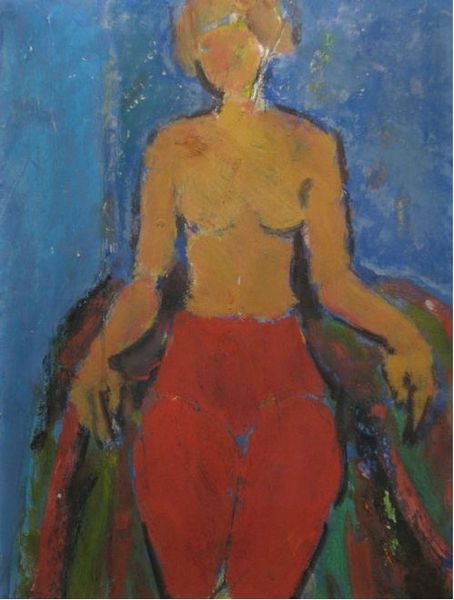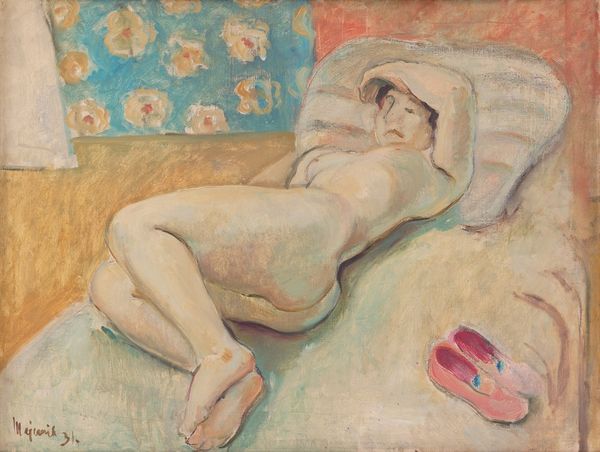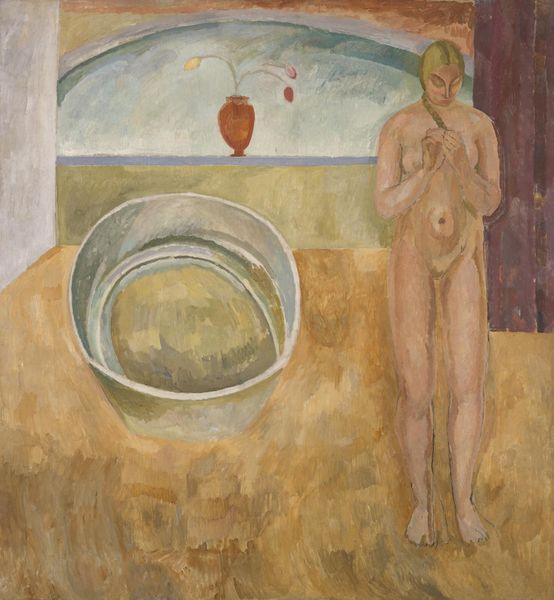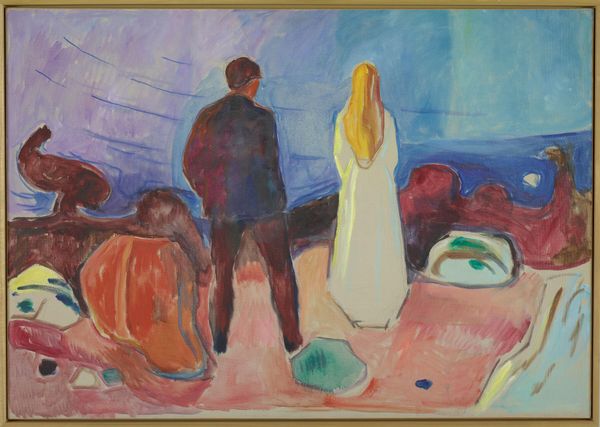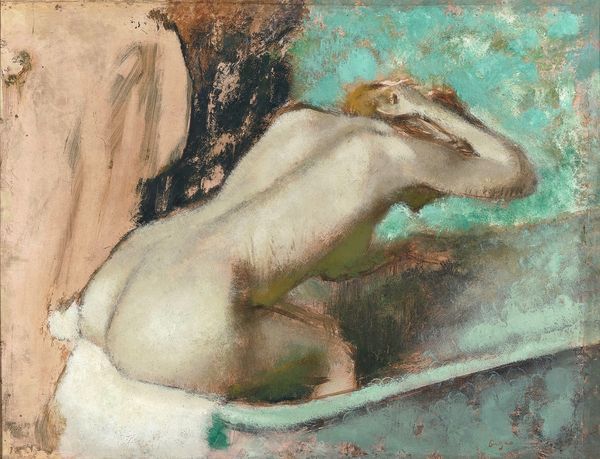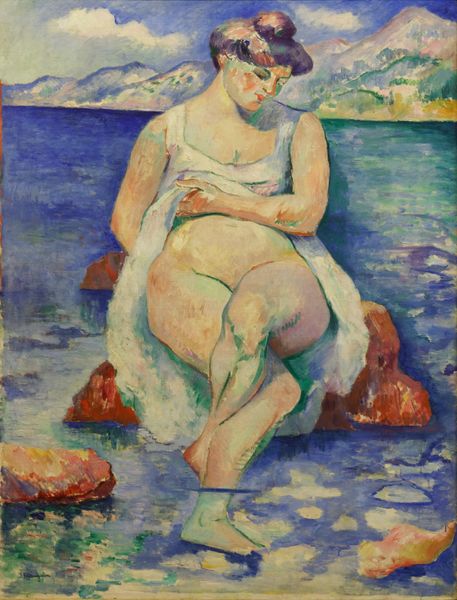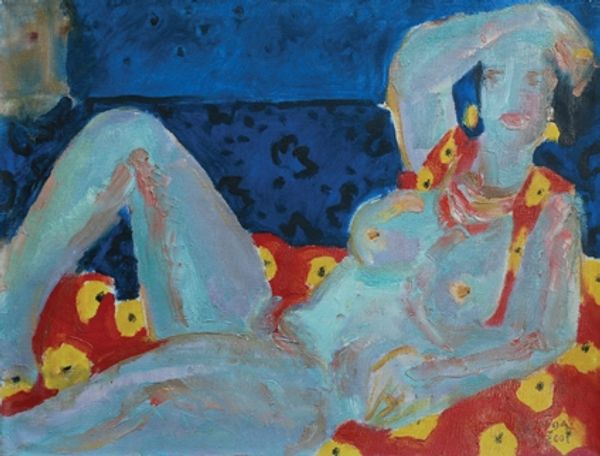
painting, oil-paint
#
figurative
#
painting
#
oil-paint
#
landscape
#
painted
#
figuration
#
possibly oil pastel
#
oil painting
#
intimism
#
expressionism
#
symbolism
#
nude
#
erotic-art
Copyright: Public Domain: Artvee
Curator: Edvard Munch’s “Summer Night. Mermaid,” painted in 1893, presents us with a somewhat unsettling vision in oil paint. What's your immediate impression? Editor: I’m struck by how still it is. The water's surface is only slightly disturbed. The color palette also adds to a very palpable sense of quiet, but also a disturbing eeriness. Curator: It’s true. That stillness invites a deeper reading. The "mermaid" herself is an intriguing figure in the context of late 19th-century symbolism. One might consider her as an allegory of female sexuality or even as a commentary on the alienation of women. How might the sociopolitical influences of that period informed Munch's portrayal? Editor: Given the prevalence of medical and scientific theories around hysteria and the objectification of the female body, I would read her vacant expression not necessarily as peaceful but deeply troubling. It challenges viewers to question the status of women and particularly their representations within artistic and public spheres at that time. It demands us to ask how art, particularly its display in galleries and museums, perpetuates that imagery. Curator: And what of the blurred boundary between the figure and the landscape? The almost dreamlike representation seems consistent with other themes he explores throughout his body of work. Does that relationship between subject and setting give you pause, too? Editor: It does. Her connection to nature could represent an idealized return to innocence but considering Munch’s biography, it is clear that those themes often address inner turmoil and challenge established concepts of gender roles and conventional expectations regarding a woman's role in family and society. I interpret the whole painting as a reflection on Munch's social reality rather than a scene derived from mythology. Curator: I think that tension, that ambiguity, is where the power of this piece lies. We can interpret and reinterpret it endlessly in relation to those pressing questions of Munch's era—questions about gender and class and psychology—that are still alive today. Editor: Indeed. This painting reminds us that art is rarely a product of its time; it is a participant, deeply implicated in power structures that shape not just images but also identities.
Comments
No comments
Be the first to comment and join the conversation on the ultimate creative platform.
